| HOME |
|---|
CARINA
The Keel
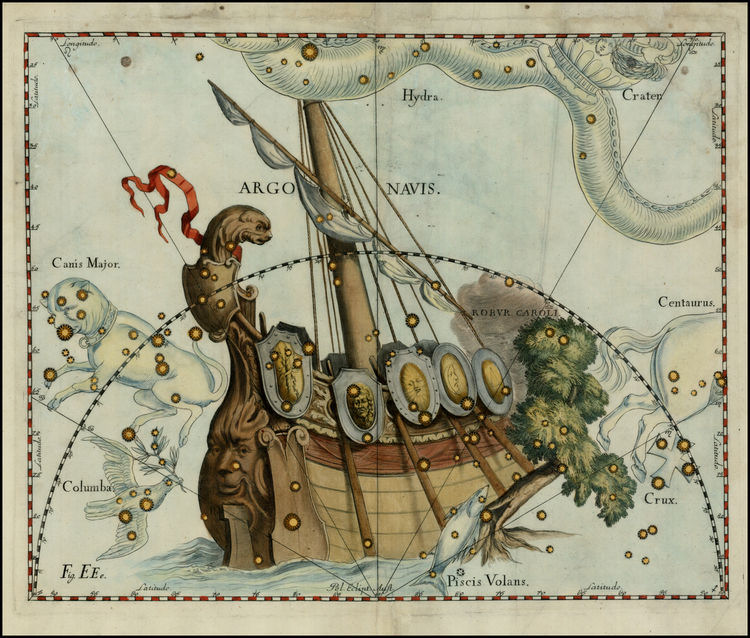
Argo Navis - Uranographia by Johannes Hevelius - 1687
| HOME |
|---|

Carina is a southern constellation, and can only be seen in its entirety below 10 degrees north latitude. Its name is Latin for keel, the part of a ship below the water line. It was once part of a much larger constellation, Argo Navis, which represented the stern section of the Argos, the legendary ship that transported Jason and the Argonauts on their quest to capture the Golden Fleece. The 1687 depiction of Argo Navis above by Hevelius is reversed, as many older star charts were, as if looking down from space at the outside of a shell of stars that surrounded Earth, as the ancients originally believed they did.
In 1751, during his famous expedition to South Africa to chart the southern skies, French astronomer Nicolas Lacaille decided the ancient constellation of Argo Navis was just too large and unwieldy. There were too many stars, and too many other, mysterious objects. The area needed to be divided into smaller, more manageable constellations. But the Argo Navis was such a majestic, traditional image it couldn't simply be scrapped and replaced by new constellations. So Lacaille compromised, and left the ancient image in the sky, with all its grand mythological romance, and simply divided the figure into three parts: Puppis, the poop deck,Vela, the sail, and Carina, the keel.
Lacaille did not, however, tamper with the original Bayer Designations (Greek letter hierarchy according to brightness) of the stars in Argo Navis. This means that each of the new constellations does not necessarily have its own alpha, beta, gamma star etc., but uses the original designations assigned to the entire Argo Navis.
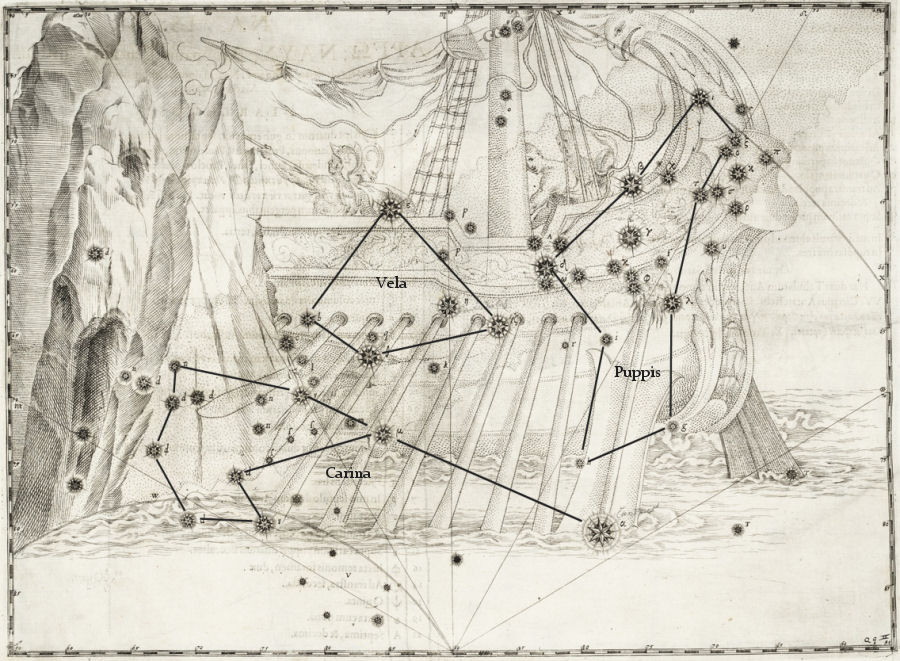
I have taken the liberty of tracing the new constellations over the magnificent artwork of Johann Bayer's 1603 Uranometria above, to help show their ancient origins.
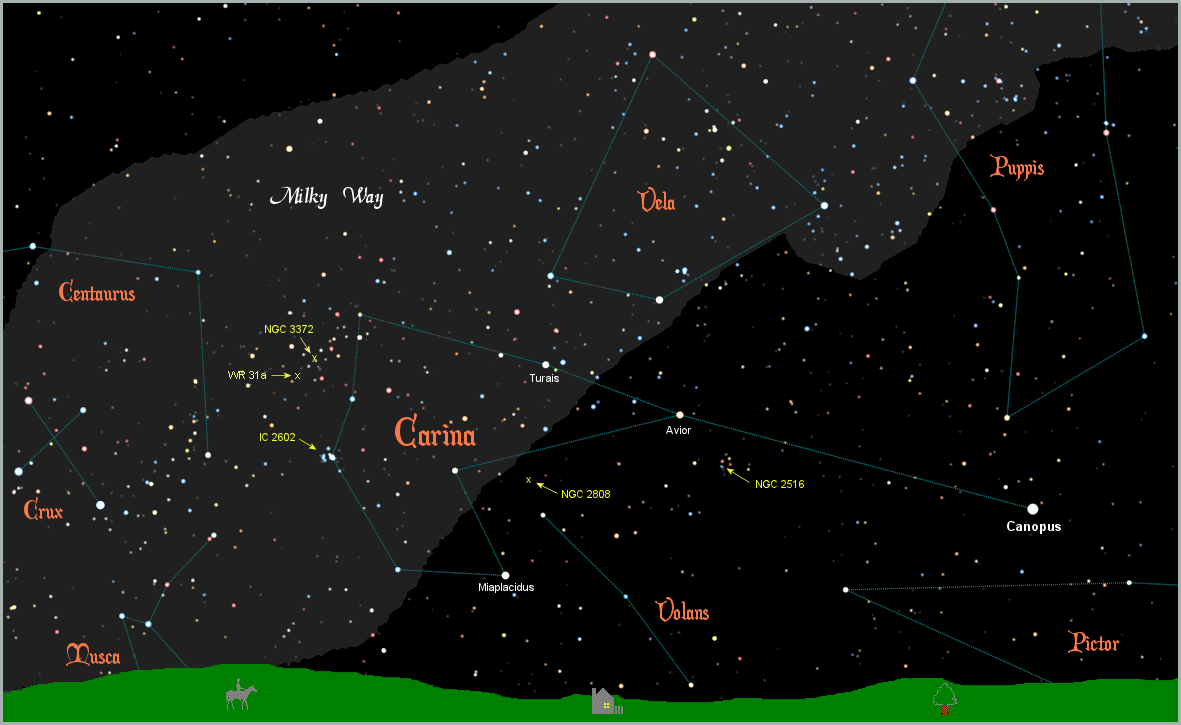
The primary feature of Carina is the brilliant Canopus (Alpha Carinae). With a magnitude of -0.72, it is the second brightest star in the night sky. Only the dog star, Sirius is brighter, blazing high above it at a magnitude of -1.46. The star's name can be traced back to ancient Greece, and the chief pilot of the Greek fleet of King Menelaus that assaulted Troy. The pilot died returning from Troy in 1183 BC, and had both a city and this star named in his honour. Canopus is a A9II yellow/white bright giant, about 300 light years away. The star cannot be properly viewed much above 30 degrees north latitude.
The second brightest star in Carina (Beta Carinae), with a magnitude of 1.68, is named Miaplacidus for placid waters. It is a A1III blue/white giant, about 113 light years away.
With a magnitude of 1.86, the next brightest star (Epsilon Carinae) was given the apparently arbitrary name of Avior by British map makers in the 1930's. It is a binary system, classified as aK3III orange giant, about 610 light years away.
The final named star in Carina is Turais (Iota Carinae), the Arabic name for the ornamental aplustre, overhanging and shielding the stern of the ship. With a magnitude of 2.21, it is 690 light years away, and classified as an A7I white supergiant.
There are nine stars in Carina with confirmed planetary systems. They are all very far away, well beyond visual range, and all the planets discovered so far are inhospitable gas giants. For more information on these and other extrasolar planets, visit NASA's New Worlds Atlas, and The Open Exoplanets Catalogue.
IC 2602 is an open star cluster centered on the star Theta Carinae, and has been dubbed The Southern Pleiades, due to its similarity to the famous northern Pleiades. The cluster is 479 light years away and shines with a combined magnitude of 1.9.
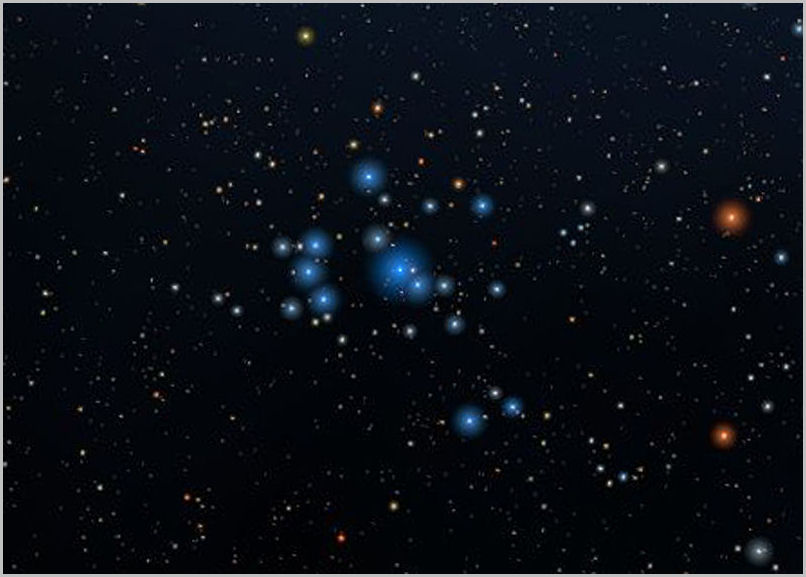
NGC 2516 is another open star cluster that looks pretty good through a small telescope. The cluster is 1,300 light years away and has an overall magnitude of 3.8.
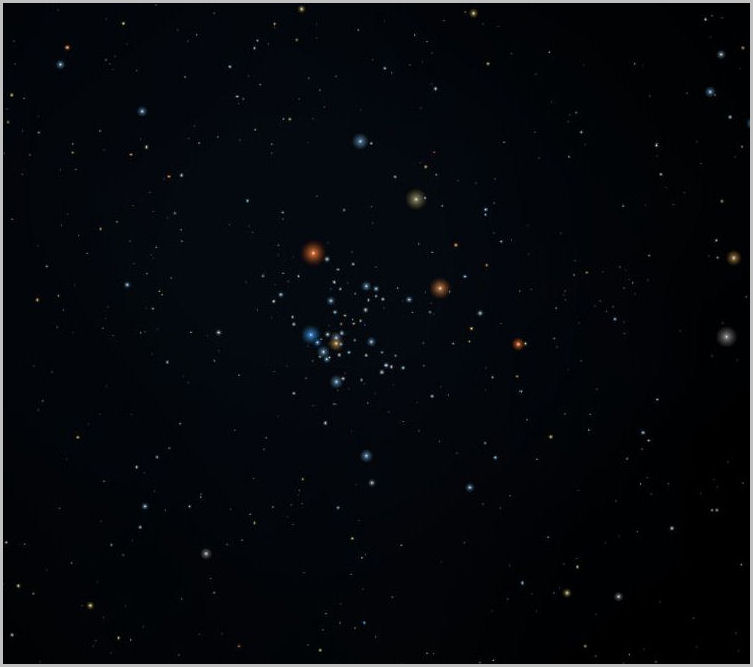
NGC 3372, The Great Carina Nebula, is a massive, bright nebula four times larger than the Great Orion Nebula, containing several objects of note.
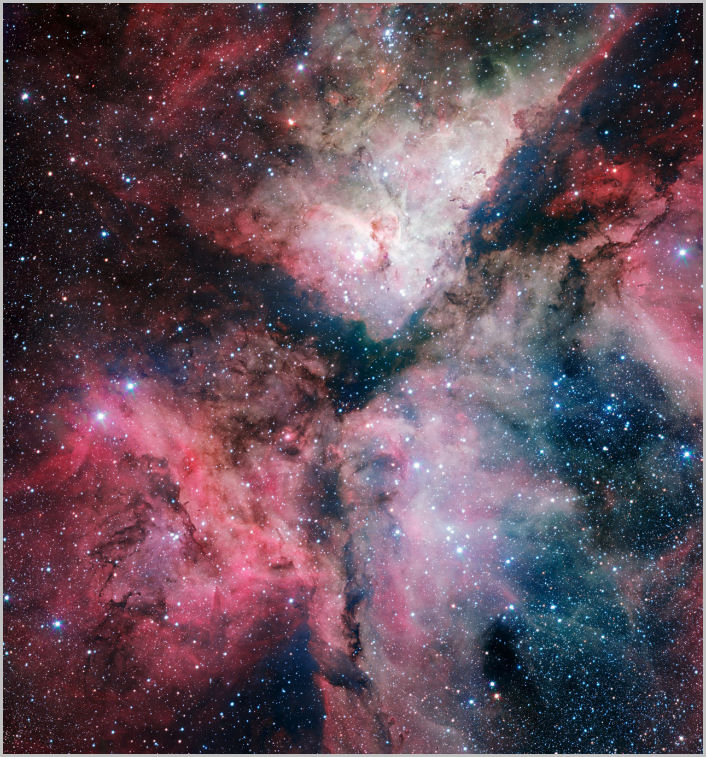
A closer look at the northern portion of the Great Carina Nebula identifies some of its major features.
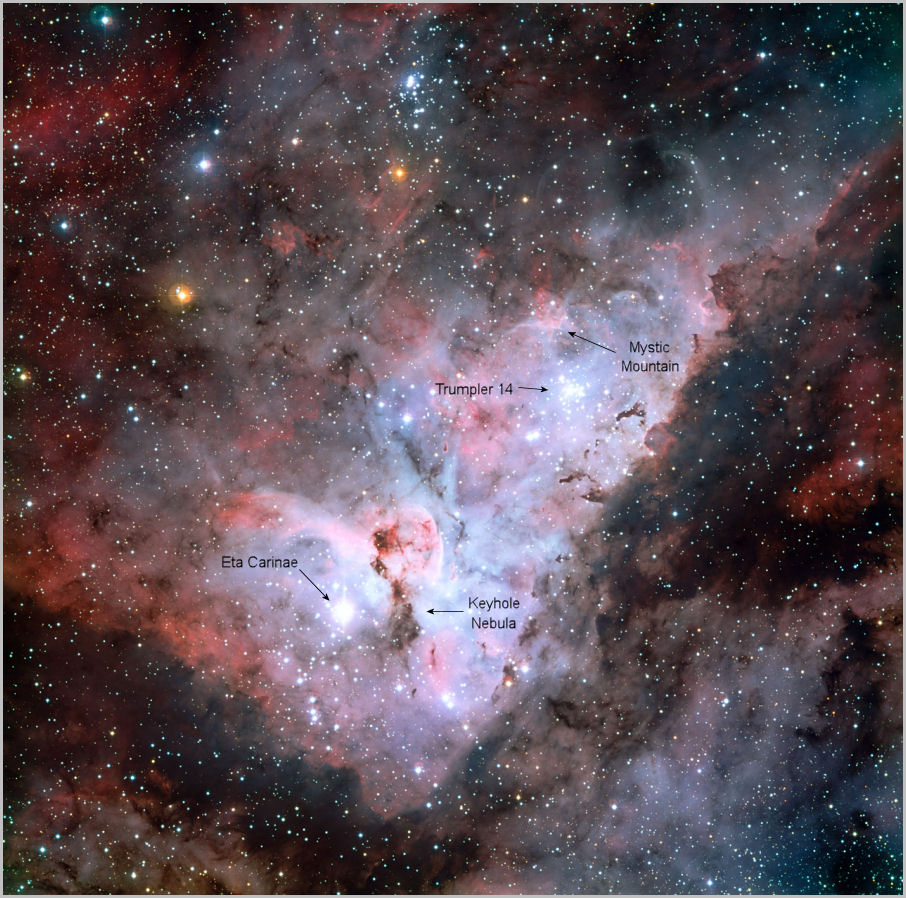
At a distance of 8,000 light years, the open star cluster, Trumpler 14, presents a dazzling display of hot young blue stars.
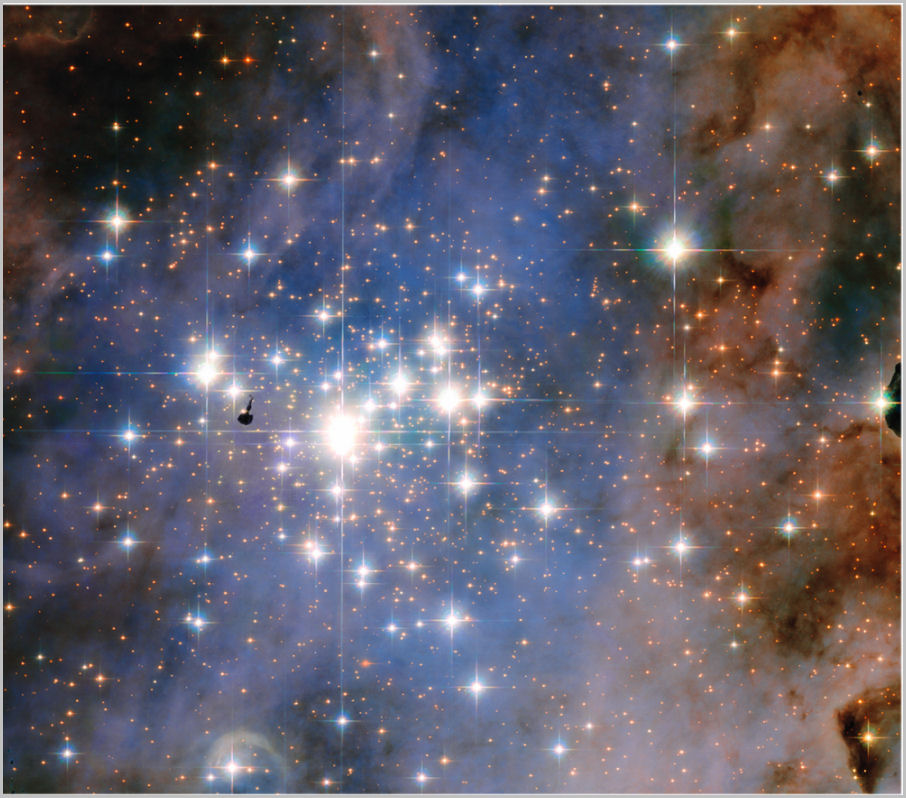
Deep inside the Great Carina Nebula is Eta Carinae, a wild and crazy star with a long history of dramatic changes in brightness. Then, in 1843 it went through a supernova explosion, and somehow managed to survive the normally catastrophic experience. The explosion created a huge nebula of expanding gas that now surrounds the star, called the Homunculus Nebula.
Subsequent studies have found Eta Carinae to be a binary star system. The smaller of the pair is hidden inside the nebula, but calculated to be a hot supergiant star 30 times more massive than the Sun. The primary star is a true monster, an extremely rare B1 blue/white hypergiant, belonging to a subclass of stars called luminous blue variables. It is one of the largest, most unstable stars ever discovered. It has a mass 120 times greater than our Sun, and is one million times more luminous. It lives on the very edge of the Eddington Limit, where the outward pressure of radiation becomes stronger than the gravity holding it all together, which means the star is on the verge of exploding - again! Only this time it will be a hypernova, one of the rarest and most powerful explosions in the universe.
Eta Carinae could explode in a few thousand years, or it could explode tomorrow. Fortunately for us, the explosion will take place 8,000 light years away. Yet even at that extreme range, the radiation from the explosion will affect orbiting satellites. Earth's atmosphere however, should protect the planet's surface, and the lifeforms that reside there, including us.
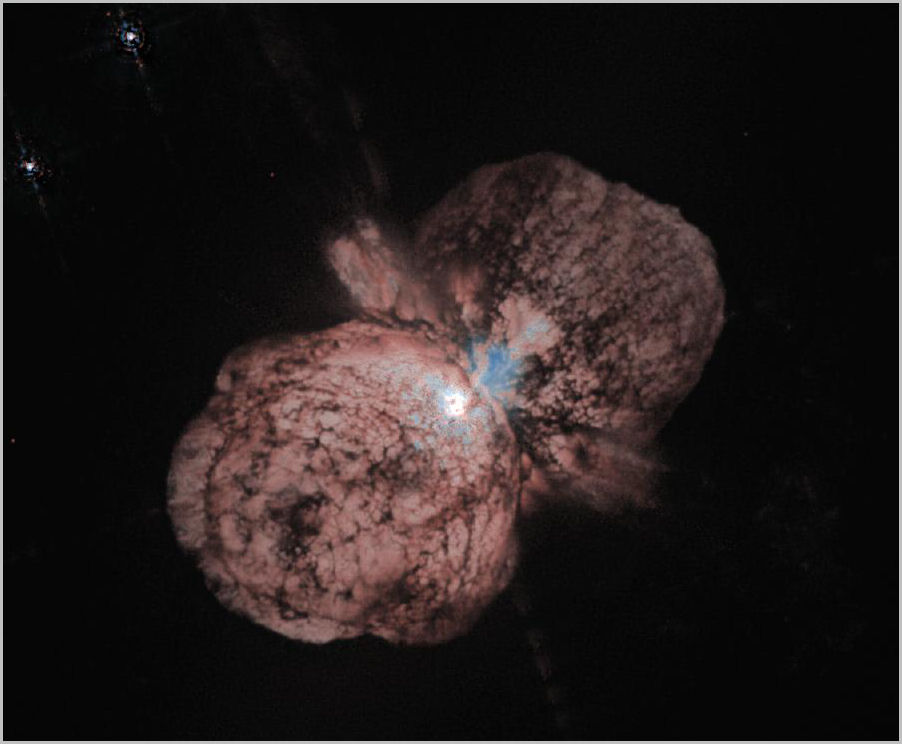
Magical only begins to describe the Hubble image below. It is an area of intense star formation inside the Carina Nebula dubbed the Mystic Mountain. Giant clouds of gas and dust shaped by stellar winds from within and without. Energetic nearby stars blow off the outer layers of the clouds, leaving behind super dense clumps and pillars three light years tall. Plumes of ionized gas from hot new stars within can be seen shooting out sideways from the pillar at the top of the image.
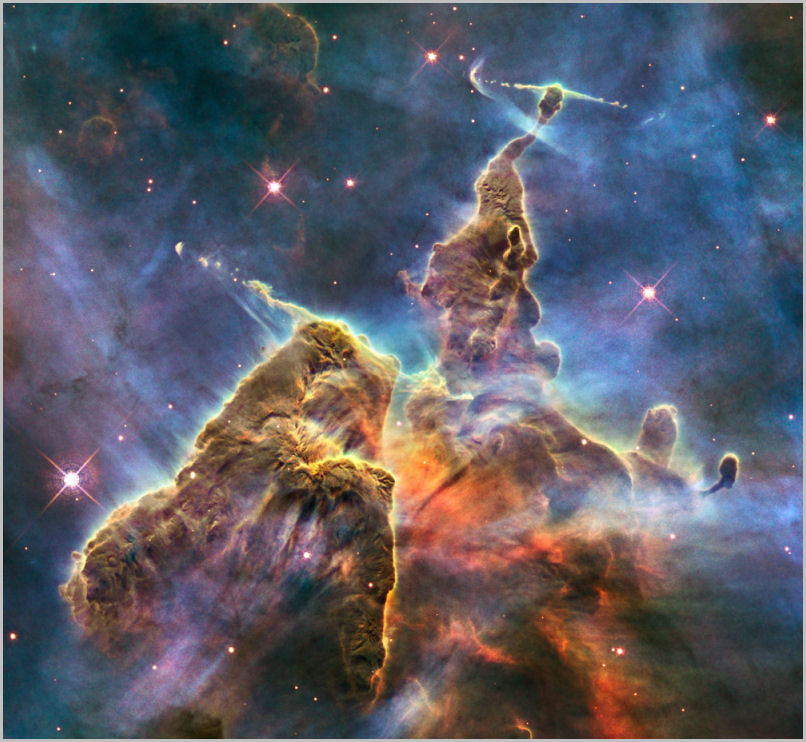
A good target for a small telescope is NGC 2808, a big, bright globular cluster containing over a million stars. It is 30,000 light years away, and has a magnitude of 6.3.

At the same distance of 30,000 light years, but very much dimmer at magnitude 10.85, is WR 31a,, a Wolf-Rayet star surrounded by a beautiful blue bubble of expelled gases. Wolf-Rayet stars are super massive stars that lead very short lives, becoming very hot and luminous as they shed their outer layers and ultimately explode as supernovae.
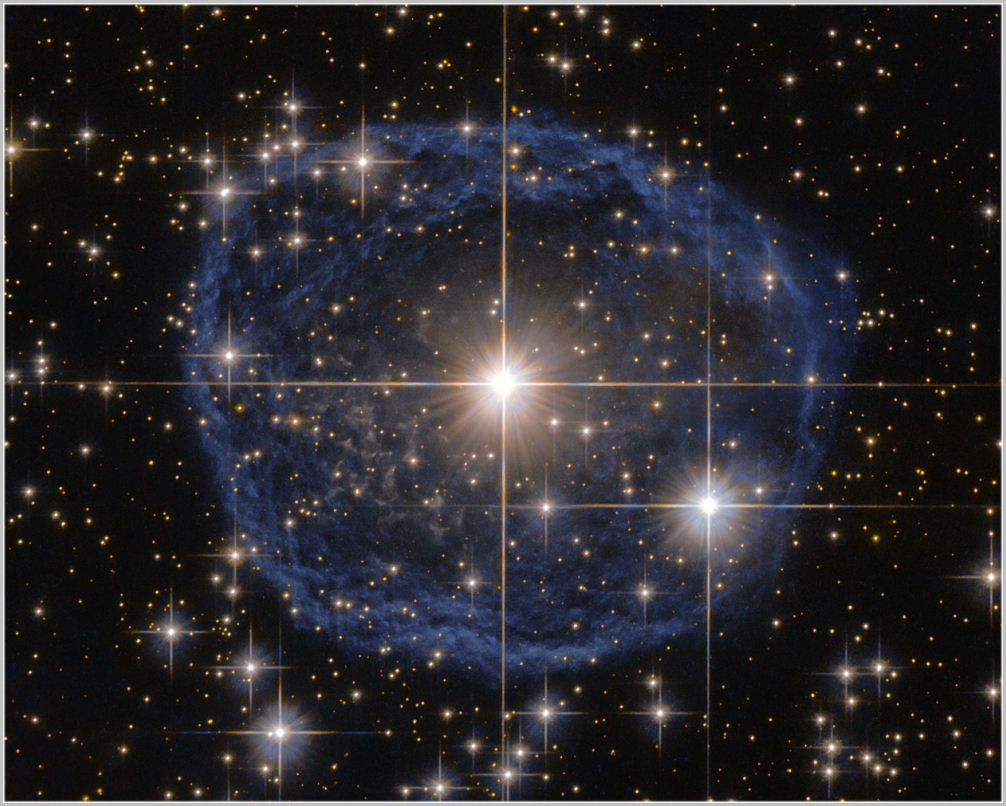
|
|
|
|
|
|